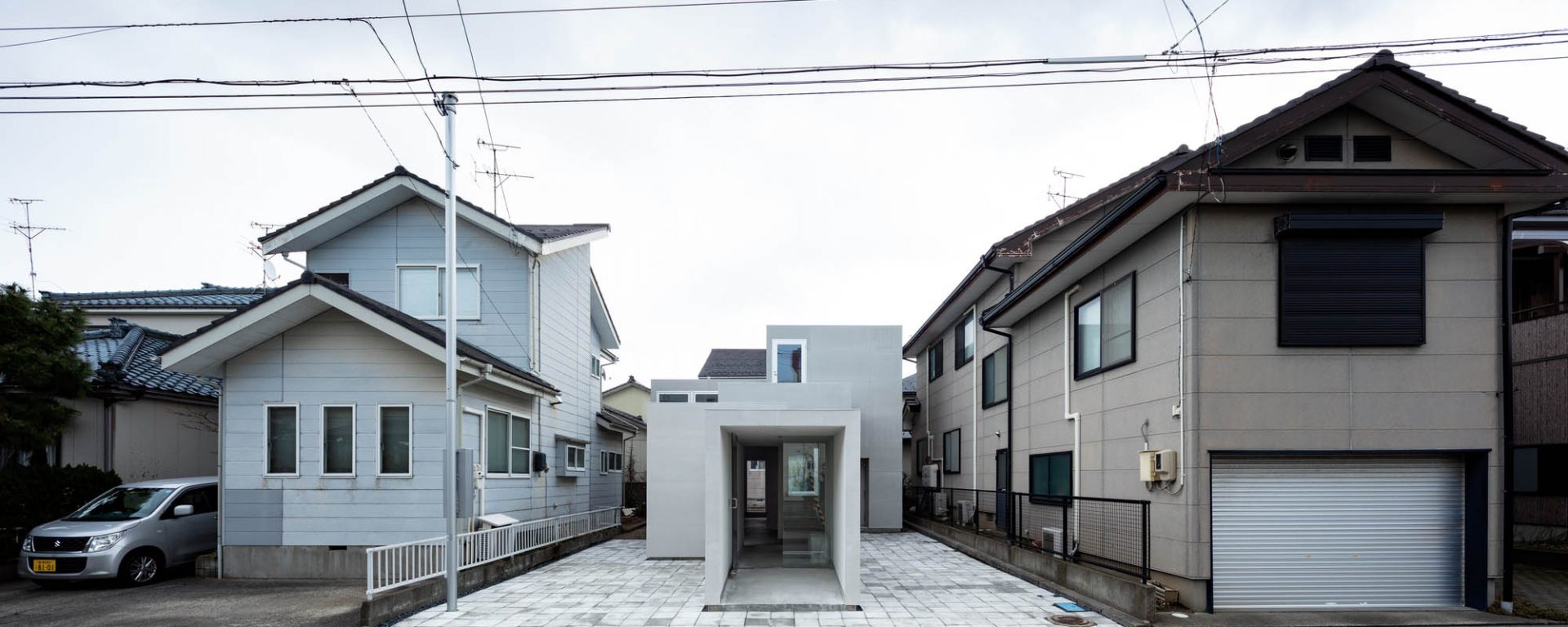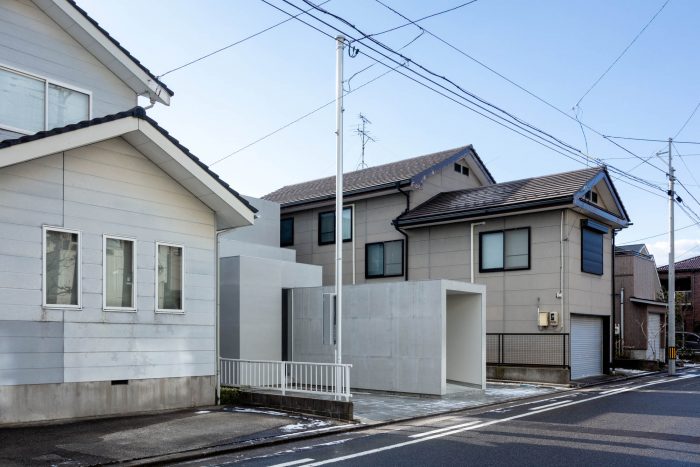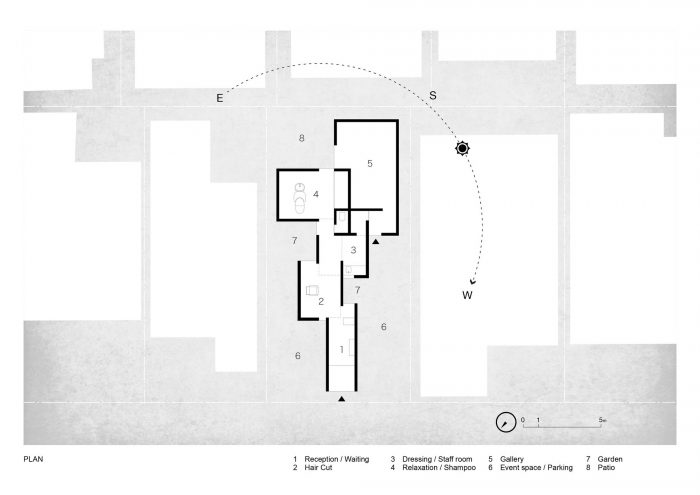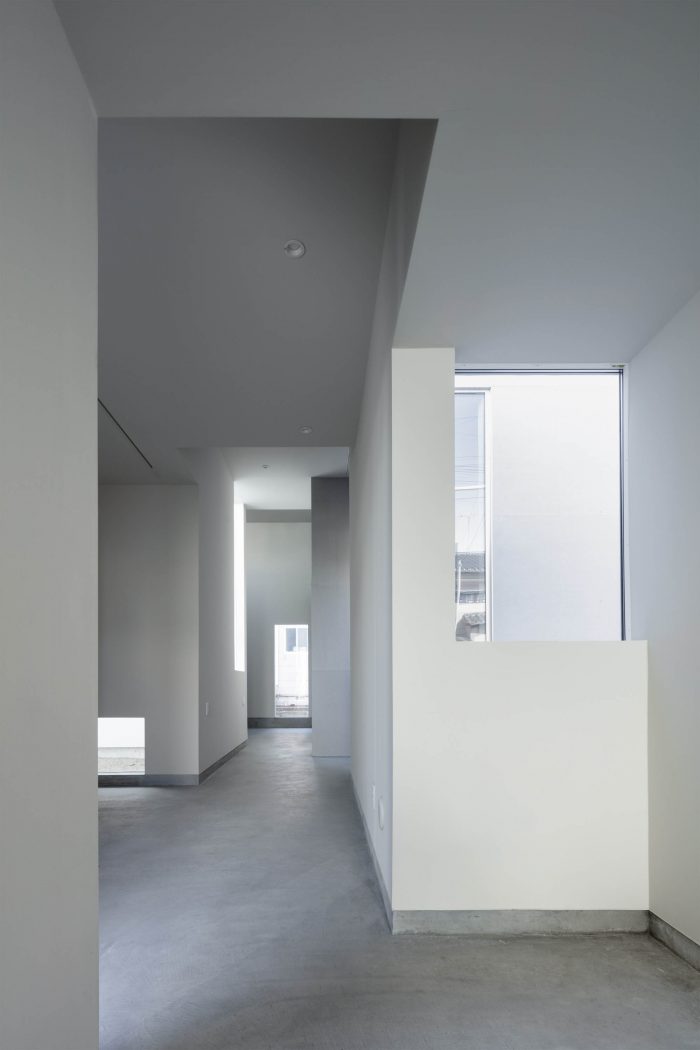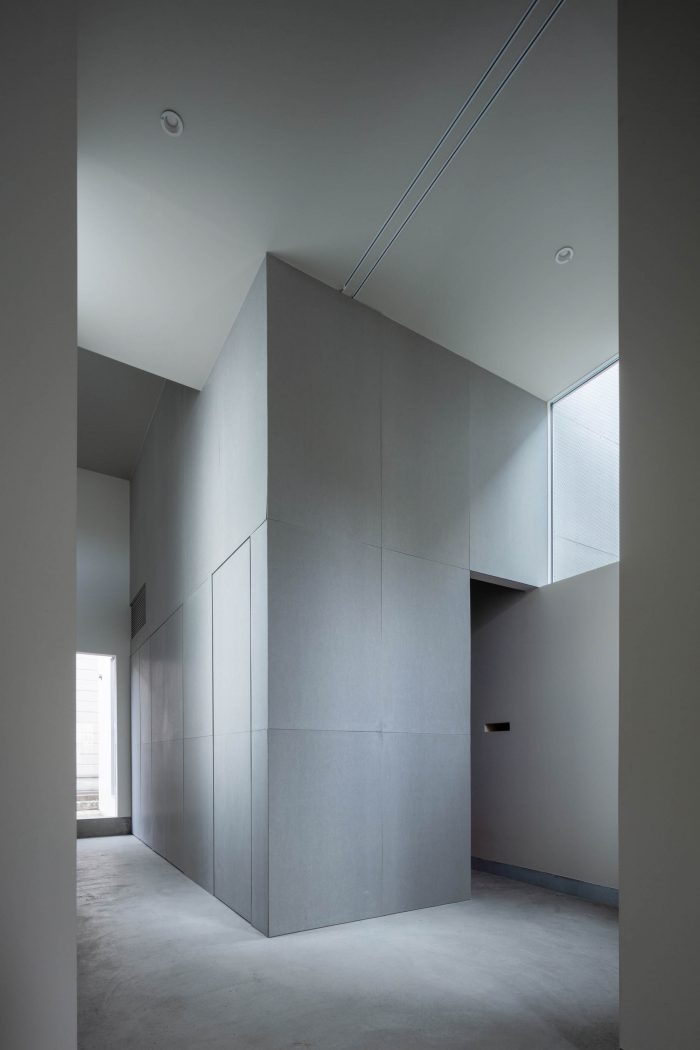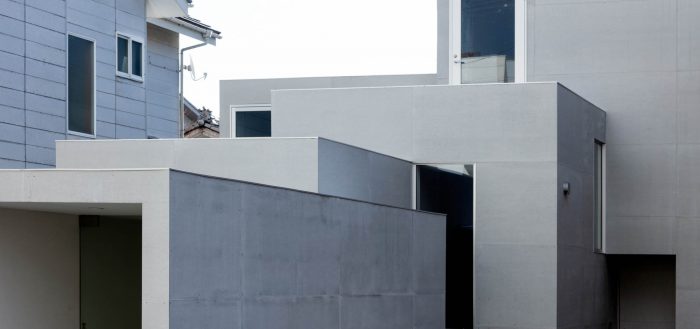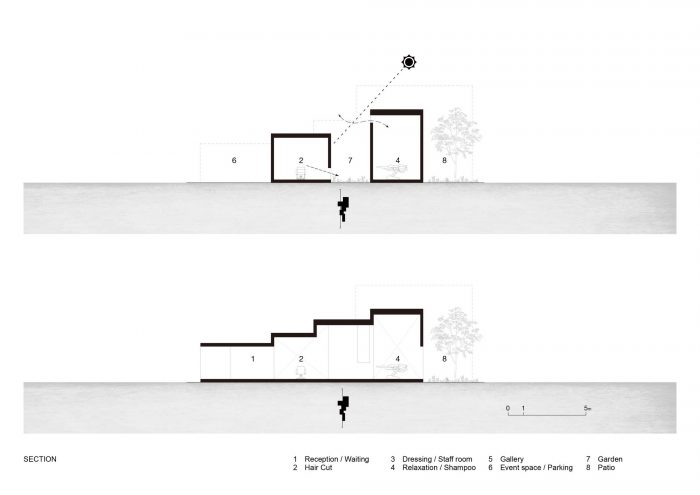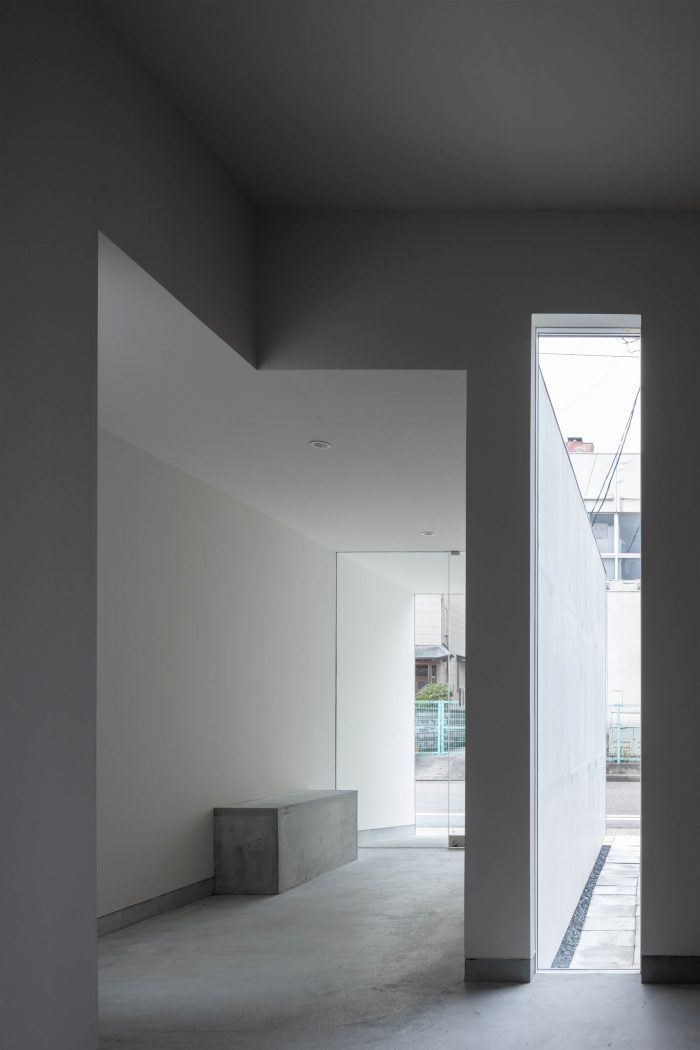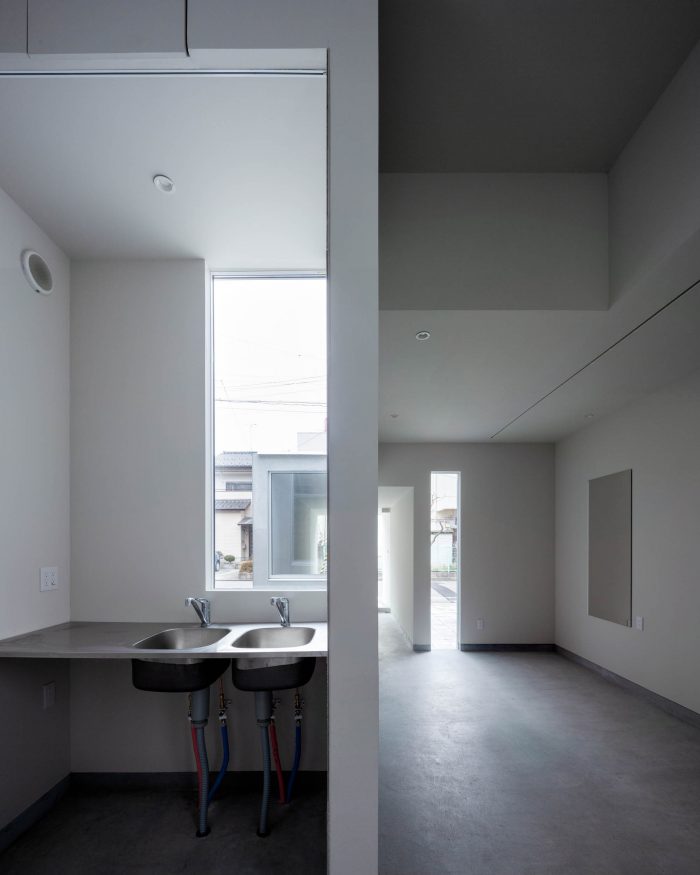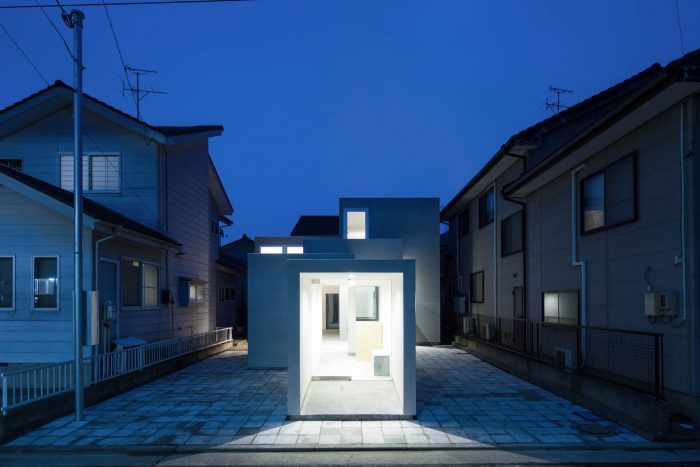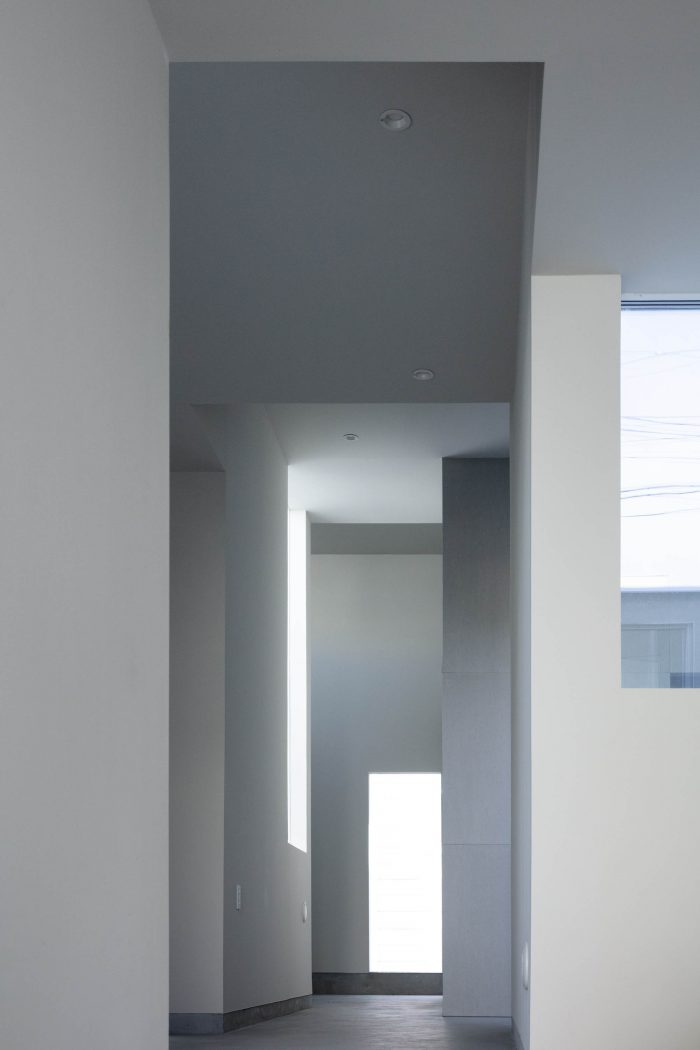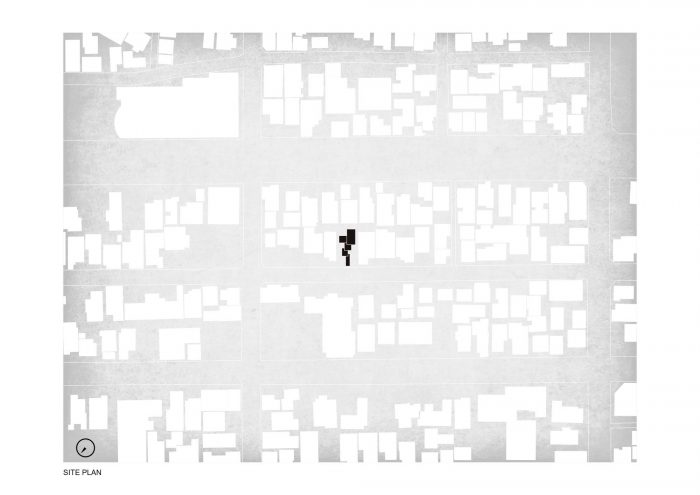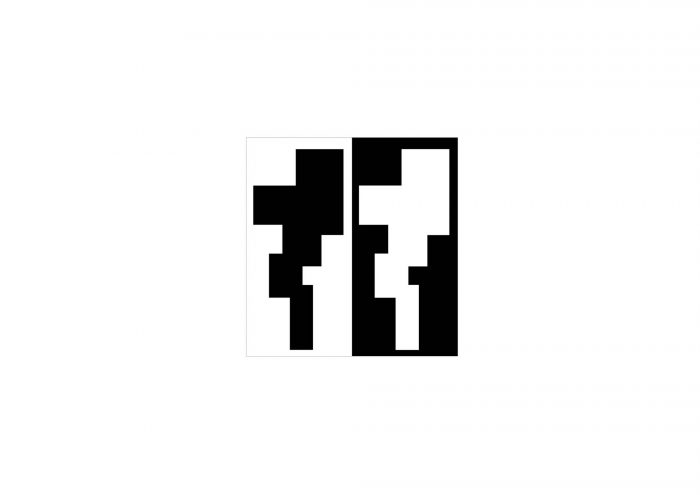某省城的美容院。 该项目从设计到完工历时8个月。场地距离市中心约10分钟车程,位于一个安静的街区,1927年被改造成住宅区。 当我们第一次到现场参观时,感觉到这个区域有很多建筑是由多个小体量组成,物理尺度不一致,如一个入口、一个窗台、一个露台、一个仓库和一个车库。此外,虽然建筑的高度合理,但由于其构图使视线通向开阔的天空,所以街景的尺度感很亲切。
A beauty salon in a provincial city. The project took 8 months from design to completion. The site, about a 10-minute drive from the city center, is located in a quiet neighborhood that was converted to a residential area in 1927. When we visited the site for the first time, we felt that there are many buildings in this area that are composed of multiple small volumes in an inconsistent physical scale, such as an entrance, a bay window, a terrace, a warehouse, and a garage. In addition, although the buildings are reasonably tall, the streetscape has an intimate sense of scale because its composition allows the line of sight to pass through to the open sky.
在这个场地上为建筑提出一个简单的形状,如立方体,会强调其形式上的象征意义,并使建筑与城市的关系感到尴尬。因此,我们将美容院设计成多个体量的形式,与周围环境具有相同的物理和亲密的尺度。从方案中建模–首先,我们力求创造一个被柔和而均匀的间接光所包围的空间,因为这个方案是一个发廊。
Proposing a simple shape for the building on this site, such as a cube, would have emphasized its formal symbolism and made the building feel awkward in relation to the city. Therefore, we devised the beauty salon in the form of multiple volumes that have the same physical and intimate scale as the surrounding environment. Modeling from the program – First of all, we sought to create a space surrounded by soft and homogeneous indirect light because the program is a hair salon.
由于场地北侧临近道路,所以开间充分利用了这一方面的优势,保证了内部光线的柔和和一致。 场地狭长,为了获得建筑后部的自然采光,无论从平面还是立面,建筑的形状都是由前向后逐渐扩大的。如果把美容院的项目区分开来,可以分为三类:等待、剪发、洗头。 因为这三种活动所需要的光照质量是不同的,所以我们决定将空间划分为三个独立的区域,尽管它们是一个序列。
Since the site is adjacent to a road on the north side, the openings take full advantage of this aspect to ensure a soft and consistent light internally. The site is long and narrow, and in order to obtain natural light at the back of the building, the shape of the building gradually expands from the front to the back, both in plan and elevation. If we differentiate the program of a beauty salon, it can be divided into three categories: waiting, cutting hair, and washing the head. Because the quality of light required for each of these three activities is different, we decided to divide the space into three separate zones even though they are one sequence.
因此,我们创造了三个体量:等待室、剪发区、洗头区;在方案中又增加了两个体量:员工室和画廊。 这五个体量的相互渗透,形成了一个空间序列,尽管每个空间与下一个空间是分割的。小镇发廊的人物与地面构图–作为一家美容院,既要保护顾客的隐私,又要为顾客提供适当的开放感和安全感。为了在一个被房屋包围的场地上开放建筑,希望能有一个替代性的透明化连接内部和外部。
Therefore, we created three volumes: a waiting room, a cutting area, and a shampoo area; two more volumes were added to the program: a staff room and a gallery. The interdigitation of these five volumes creates a sequence of spaces, even though each space is divided from the next. The town’s hair salon with figure and ground composition – As a beauty salon, it is desirable to protect the privacy of its customers, simultaneously providing them with an appropriate sense of openness and security. In order to open up the building on a site surrounded by houses, it is desirable to have an alternative to connecting the inside and outside by transparency.
因此,在本项目中,我们试图通过对建筑形态的操作,设计出一个让人们即使身处室内,也能感受到仿佛身处室外的空间。在这个研究中,我们通过在场地上布置5个矩形来形成室内空间,同时,我们试图获得一个平面作为花园和天井。没有层次之分,两者一视同仁。作为 “图 “的建筑和作为 “地 “的场地,其尺度和形式都被认为是相似的。
Therefore, in this project, we tried to design a space that makes people feel as if they are outside even though they are inside by manipulating the building form. In this study, we formed the interior space by arranging five rectangles on the site, and at the same time, we tried to obtain a plane as gardens and a patio. There is no hierarchy, and both are treated equally. The scale and form of both the architecture as “figure” and the site as “ground” are considered to be similar.
因此,当人们走过室内空间时,”人物和地面 “被颠倒过来,造成室内和室外可以互换的错觉。居住者给人的印象是他们正沿着建筑之间的小路行走,就像一条通道。通过形式的操作和体量的相互挖掘,室内与室外、建筑与环境之间的界限变得模糊不清。
As a result, when people walk through the interior space the “figure and the ground” are reversed creating the illusion that the interior and the exterior are interchangeable. Occupants are given the impression that they are walking along a path between the buildings, like a passage. Through the manipulation of form and the interdigitation of volumes, the boundaries between interior and exterior, architecture and context, become blurred.
建筑师:Studio Takuya Hosokai
面积 : 84 m²
年份:2020年
摄影:Naomichi Sode
建筑师:TAKUYAHOSOKAI
结构:Tetsuya Tanaka Structural Engineers
施工单位:Inoue Architectural Design Incorporated
城市:Niigata
国家:日本
Architects: Studio Takuya Hosokai
Area: 84 m²
Year: 2020
Photographs: Naomichi Sode
Architects:TAKUYAHOSOKAI
Structure:Tetsuya Tanaka Structural Engineers
Constructor:Inoue Architectural Design Incorporated
City:Niigata
Country:Japan

